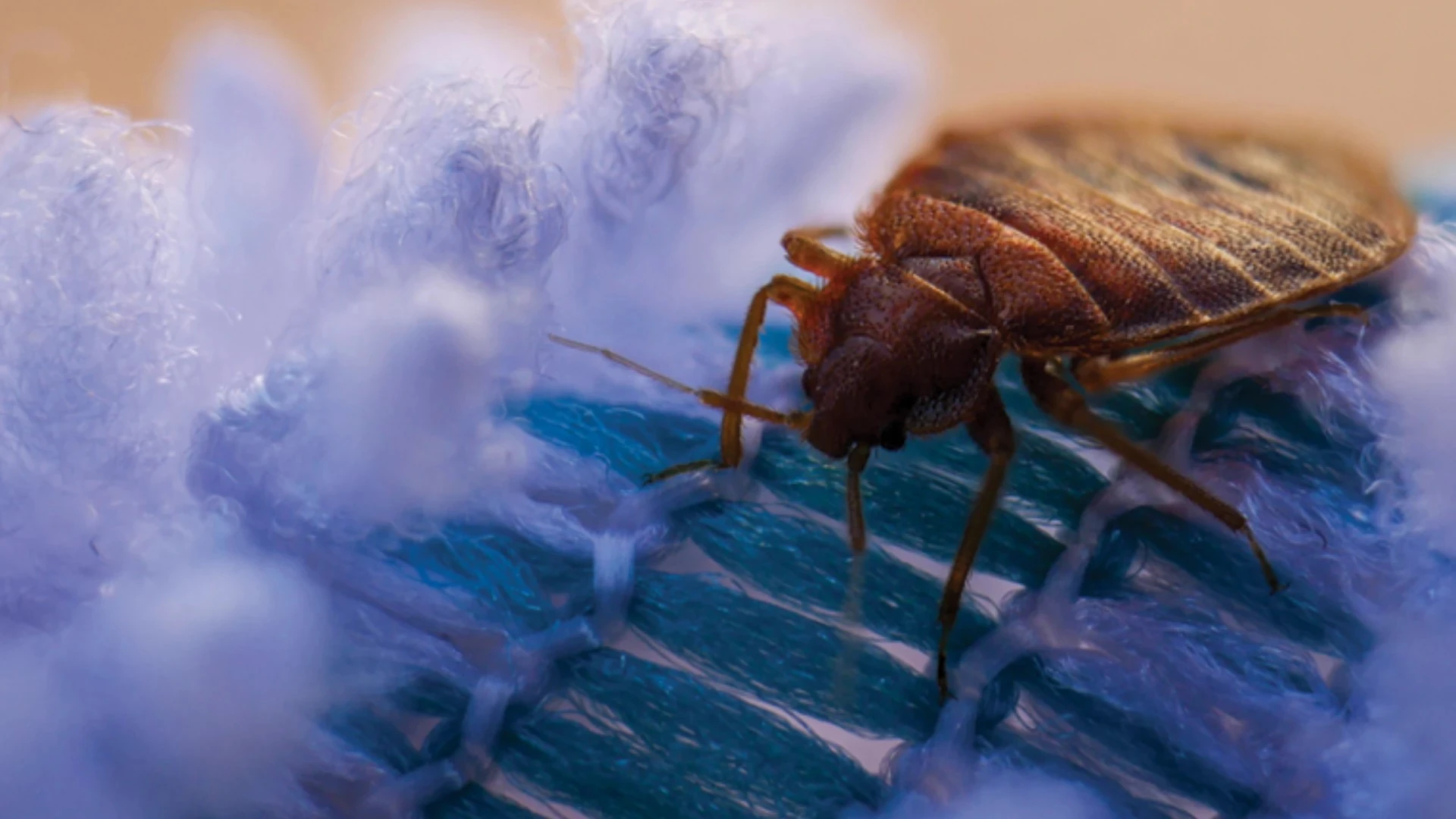 The title of this article, “Pesticide Use in Organic Facilities,” may have given you a little jolt. After all, organic food processing is all about avoiding the use of chemicals, isn’t it?
The title of this article, “Pesticide Use in Organic Facilities,” may have given you a little jolt. After all, organic food processing is all about avoiding the use of chemicals, isn’t it?
It most certainly is.
The accepted rules for doing pest control in organic food processing, packaging and storage facilities in the United States are laid out in the U.S. Code of Federal Regulations, Part 7 (Agriculture), subpart C, paragraph 205.271, which is called the “Facility Pest Management Practice Standard.” An equivalent rule is in place in Canada. This standard states that, prior to the use of any pest control material, non-chemical strategies must be tried and found inadequate to prevent or control pests. Non-chemical strategies include sanitation, pest exclusion and physical controls such as management of lighting, temperature, air movement and humidity. Mechanical controls, such as trapping, also should be attempted.
This means, in short, that your bait gun, sprayer, duster and other application equipment stay in the truck (for the most part) while you are servicing organic plants. Instead, your primary focus should be on inspecting and monitoring. As part of your inspecting activity, you should be looking for signs of pests and pest damage, and for any conditions that could allow pests to enter, hide, feed or breed inside the facility or near it. When you find deficiencies in sanitation, structural maintenance, lighting, air quality, personnel practices or any other factor that contributes to pest invasion or survival, you must bring these to the attention of plant management, whose job is to correct those conditions.
 The PMP and client can sign off on every material proposed for use, and this can then be shown to the representative of the organic certifying agency whose responsibility it will be to certify the organic operation. The PMP and client can sign off on every material proposed for use, and this can then be shown to the representative of the organic certifying agency whose responsibility it will be to certify the organic operation. |
Choosing Pesticides. Having established the primacy of non-chemical methods of preventing and controlling pests, however, there remains the reality that pesticides are necessary for prevention and control.
Every first-year pest control technician knows that cockroaches cannot be eliminated by cleaning alone; and that a food plant that is built within flying distance of a cattle feedlot is under heavy fly pressure, and some of those flies are bound to find their way inside — no matter how tight the screens.
Other pests — ants, occasional outdoor invaders and stored product pests — will find their way inside the plant, where they will get to work compromising food safety and violating the Federal Food, Drug and Cosmetic (FD&C) law that states that it is unlawful to prepare, pack or store food under conditions under which the food may become contaminated.
Even the organic rules themselves (the above-mentioned Facility Pest Management Practice Standard) acknowledge that pesticides are sometimes necessary, because the need for food safety under FD&C still trumps the organic rules. The organic rules say that, notwithstanding the obligation to use non-chemical measures:
. . .a handler may otherwise use substances to prevent or control pests as required by federal, state, or local laws and regulations: Provided, that, measures are taken to prevent contact of the organically produced products or ingredients with the substance used.
|
Manufacturers of Available “National List” Materials BASF: www.pestcontrolfacts.org (Mother Earth 2% Py Insecticide: non-synergized pyrethrin aerosol spray; Mother Earth D Pest Control Dust: diatomaceous earth dust; Mother Earth Exempt Contact Insecticide: horticultural oil-based insecticide; Mother Earth Granular Scatter Bait: boric acid-based granular insecticide; Allure MD: pheromone-based mating disruptant) Bell Laboratories: www.belllabs.com (Terad3: rodenticide with vitamin D3 — cholecalciferol) EcoSmart: www.ecosmart.com (a line of horticultural oil-based insecticide products aimed primarily at homeowners) FMC Corp.: www.fmcprosolutions.com (Borid: boric acid dust; Drax Ant Bait, Drax Ant Kill Gel, Drax PF: boric acid ant baits) Kness Manufacturing Co.: www.kness.com (multiple-catch and snap-type rodent traps, plus ant baiting systems) MGK Corp.: www.mgk.com (Pyganic Pro Concentrate, Pyganic Pro Dust: non-synergized pyrethrin products) Rockwell Labs: www.rockwelllabs.com (InTice Roach Bait: boric acid-based cockroach bait; InTice Granular Bait: boric acid-based granular insect bait; InTice Select Ant Granules: boric acid-based granular ant bait; InTice Sweet Ant Gel: boric acid-based gel bait; BorActin: 99% boric acid powder; InVade Bio Foam products) Tréce: www.trece.com (pheromone trapping systems for stored product pests; Cide IMM: pheromone-based mating disruptant for stored-food moths) Woodstream Professional Pest Management: www.woodstreampro.com (horticultural oil-based “Poison-Free” line of roach, ant and flying insect killers; multiple-catch and snap-type rodent traps) |
So: What are the rules? How can I effectively apply pesticides in and around an organic plant when I need them, without running afoul of the inspection agencies that oversee these locations?
Sub-paragraphs (a) and (b) of the Facility Pest Management Practice Standard spell out the requirement that non-chemical measures must be the first line of defense against potential infestations, and the first line of attack against established infestations. Sub-paragraph (c) states that, in the event that non-chemical controls are not able to prevent or control pests, it is permissible to use a material named on the National List.
This brings up the question: What is the National List? Briefly stated, the National List is a portion of the National Organic rules that lists pesticide active ingredients that, by virtue of their natural origin or low-impact nature, are permitted for use in organic operations.
The so-called National List pesticides include those containing boric acid, natural horticultural oils, pheromones, vitamin D3 and elemental sulfur. You almost certainly have some materials in your truck or storeroom that qualify as National List pesticides — many cockroach and ant baits, for example, contain boric acid. Rodenticides are available that contain vitamin D3 (cholecalciferol) as an active ingredient. And several manufacturers offer sprays, dusts and other pesticides using horticultural oils as active ingredients. Refer to the listing of manufacturer Web sites on page 54 of this article for a more complete — though surely not exhaustive — list of manufacturers of National List pesticides.
Sub-paragraph (d) of the Facility Pest Management Practice Standard goes one step further, and states that, should a material named on the National List be found inadequate to prevent or control pests, we have permission to apply a pesticide whose active ingredient is not named on the National List.
Sub-paragraph (d) comes with two important conditions: in order to have the right to use a pesticide not named on the National List, you must update your written plan by indicating the product by name as a material you believe you might need; and you must apply it in such a way that there is no possibility it could come into contact with organic food, food-contact surfaces or food packaging.
Thus, your pest management program (proposal, service agreement or other formal written program) must include the names of products you might need; and it also should include a description of how you will apply each material, including how you will prevent contact of the pesticides with food.
Many pest management companies accomplish this compliance item by submitting, as part of their written pest management program, a list of authorized materials. The PMP and client can sign off on every material proposed for use, and this can then be shown to the representative of the organic certifying agency whose responsibility it will be to certify the organic operation, including its pest management program.
Applying Pesticides. Application of materials must be done in such a way that no contact occurs between the pesticides we apply and food, food-contact surfaces or packaging materials. When choosing and applying pesticides in organic facilities, refer first and always to the rules, as set forth in the Facility Pest Management Practice Standard. Then, live by these principles:
Low volatility. Baits, by virtue of their precise placement, very low volatility (low vapor pressure), low human toxicity and their tendency to remain where they are placed, are ideally suited for use in organic facilities. Given a choice of using a spray, a dust or a bait, most would agree that baits are excellent choices for controlling cockroaches and ants in food plants. Use baits strictly according to label directions, and comply with all instructions pertaining to application methods allowed in food areas. Typically, crack and crevice or spot applications may be allowed; or applications will be restricted to crack and crevice in exposed-food areas. The relatively newer liquid fly baits are useful, but cannot be applied in exposed-food areas. They are, however, good for providing a zone of defense outside of exposed-food areas.
Retrievable placements. Cockroach bait stations, ant bait arenas, and even the use of treated cord wraps (described below) fall into the category of retrievable pesticide placements, which are deployed to do a specific job, and then removed soon after. Similarly, cockroach and ant gel baits can be applied to some kind of retrievable surface — a piece of stiff paper, rolled-up corrugated cardboard fastened with a rubber band, a sticky cockroach trap or one of the commercially available insect monitoring stations. These can then be placed in locations where cockroaches or ants feed, to be removed as soon as they are determined to have accomplished their purpose. By using retrievable placements, you can assure your client (and their organic certifying agent) that the only pesticide active ingredient left behind is that which remains in the bodies of dead cockroaches, ants or flies.
Limiting volatilization. Those products that may be of higher vapor pressure than baits, e.g. sprays, are not completely unwelcome in organic plants. But they do have a tendency to become airborne, either as particles of overspray or by virtue of a higher vapor pressure when wet. You can overcome this problem by applying the products to a surface outside of the treatment area, and then bringing it inside after the deposit of insecticide has been allowed to dry. For example, in an area of high house fly pressure, panels of plywood can be painted white, treated with a residual insecticide whose label approves general treatment in food areas, and brought inside to a well-lighted area. They now serve as limited-time “attracticide” panels to reduce populations of flies as the flies come to rest on the treated panels. And they can be removed from the premises as soon as they have achieved their purpose of eliminating flies that invaded the area.
|
Take-Home Points Here’s a summary of the rules for pest control in organic facilities: 1. We must first practice sanitation, exclusion, physical and cultural controls to both prevent pests and control them once they have invaded our organic food plant. 2. If those measures are found to have failed us, we are allowed to use a boric-acid, oil- or soap-based product, or one containing a pheromone, elemental sulfur or vitamin D3. 3. If those materials fail, we can use something else, provided we’ve obtained advance approval by listing the materials we want to have available in our approved materials list. Above all, any product we apply must be used in such a way that no contact occurs between it and the organic food. |
Similarly, hanging electrical cords and other prime house fly resting sites can be treated using cord wraps that are treated outside the exposed-food area, with an insecticide approved for spot treatment in food areas. Once the insecticide has dried, the wraps can be brought inside, placed around the hanging cords, and left in place overnight to kill flies that choose the cords for resting sites. The wraps can then be removed from the food area until another treatment cycle is determined to be necessary.
Removal for treatment. In some instances, an infested piece of machinery, equipment or other fixture can be unbolted from its base, brought outside the confines of the organic processing area, treated as necessary using whatever pesticides are deemed necessary, and then cleaned and brought back inside. In this manner, a complex piece of equipment or even an entire processing line could be removed, fumigated elsewhere, cleaned and returned to service without compromising the plant’s organic integrity.
Pheromones. Pheromones are allowed as a first line of defense against stored product pests. The trap grid you might have in place for Indianmeal moths, or the cigarette-beetle monitoring system you may be considering, are permitted in organic plants just the same as they are allowed anywhere else.
For facilities that are continually vulnerable to stored product moths, continue to monitor for them using pheromone traps, and continue to recommend sanitation improvements as a way of combatting food moths. But consider adding one of the newly introduced mating-disruption products, which consist of hanging plastic cards that, when used in relatively large numbers in a susceptible area, emit large amounts of insect sex pheromone. They put out so much pheromone, in fact, that male Indianmeal moths (and the males of some other food-moth species) are unable to home in on a receptive female. Eventually, the population suffers from the males’ inability to find females, and it “crashes.”
Allowed space treatments. Sometimes, night fliers, house flies or the exposed adult stages of stored product pests will need to be eliminated quickly in the interest of food safety, and space treatment will come to mind as the best way to deliver the needed treatment. There are space treatment options under organic rules; just remember that synergized pyrethrins are not allowed. Most commercially available pyrethrin concentrates and aerosols contain synergists such as piperonyl butoxide (PBO). Ask your company’s supplier to suggest a non-synergized pyrethrin space treatment material, and use it according to label directions in areas where its use is approved. You wouldn’t ever want to rely completely on space treatment, of course, but it’s one tool in an overall integrated game plan.
Fumigation. Except as noted previously (equipment removed from the site and fumigated) and except in the case of carbon dioxide treatments, fumigation is out of the question where organic food or packaging is exposed. It is in the nature of fumigants that they go everywhere and penetrate everything, so the NOP rule requirement that pesticides not come into contact with organic food cannot be upheld. If it were necessary to fumigate a plant area, all organic food would have to be removed and kept away for a period of time to be specified by the applicable organic certifying agent.
Exterior treatments. The more pests you can eliminate before they get into the plant, the fewer you’ll have to deal with according to organic rules. Just remember that pesticides used outdoors must stay there. For facilities that are under heavy fly pressure from neighboring sources (like the feedlot mentioned previously), do everything you can to reduce the number of flies that come to your organic location. You might even try to sign up off-site troublemakers as your own clients, and thereby have a little more to say about the numbers of flies coming to your organic plant.
Visit the organic plant during several different times of day (mid-morning and mid-afternoon, at least) to find out where flies rest and feed outdoors, and treat those areas with residual insecticides, liquid fly baits and other available products. Pay special attention to trash areas, outdoor break areas and other places to which flies may be attracted — and where they may congregate prior to finding their way inside, and apply insecticides to the insects’ resting areas. Always do this in such a way that employees’ hands or feet do not come into contact with treated surfaces, and so that the material you use cannot be carried or tracked into the building. When applying insecticides outside of a food plant (including non-organic facilities), stay away from air-intake vents, which might suck insecticide particles or vapors inside. If you want to use granular fly baits but don’t want to use the “scatter” method around an organic plant, consider using commercially available fly bait stations — or fashion your own using lengths of PVC pipe with a lengthwise slit cut into it, and hang them in locations where the chance of causing any contamination is zero.
Exterior pesticide applications might be needed for reasons other than flies. For example, plants under high pressure from local populations of crickets, ground beetles or other invaders might need to have these pests dealt with on the exterior so that pesticide applications are not needed on the interior. Again, when a need is demonstrated for such applications because sanitation, exclusion and “National List” materials are inadequate, make sure you make those applications in such a way that they cannot be blown on the wind, sucked in by air-intake systems, or tracked in on employees’ shoes or hands.
Also look at lighting, door policies and any other aspect of the organic facility you can influence in order to reduce the number of flies that are able to get inside. Are there mercury-vapor lights mounted over exterior doors? Have your client switch to sodium-vapor bulbs in those fixtures to reduce fly attraction. Are flies entering process areas via doors that employees use to go directly from process areas to the outdoor break area? Suggest a door-use policy that requires employees to access break areas via a more circuitous route — one that protects sensitive areas from direct exposure to the outdoors.
Progressive control. Look at the organic facility from outside to inside, identifying areas of successfully higher sensitivity. Try to focus all control measures — last of all, pesticide applications — most heavily on those areas of least sensitivity, including the plant surroundings, the immediate exterior of the building, waste and rendering areas, and then other non-food interior areas. In each successively more-sensitive zone, apply less-extreme prevention and control measures.
According to the rules discussed previously, do what needs to be done in the areas without exposed organic product. In most cases, it will either be unnecessary to use pesticides in exposed-food areas, or the need will be minimal and only occasional.
Rodent control. Traps are almost universally the control method of choice inside food plants, and this is especially the case in organic plants. Depending on the agency certifying your client as organic, it may be necessary to either switch to exterior traps instead of bait stations containing toxic bait; or you can use a block bait containing the active ingredient, cholecalciferol (vitamin D). Whether to use sheltered traps in outdoor rodent devices, or cholecalciferol bait, or whether to petition the organic certifying agent to allow another bait, depends on the rodent pressure from the surroundings, the facility’s history of rodent activity inside and the sensitivity of the product being manufactured.
Reminder. Remember that the organic rules apply within organic establishments, wherever you are. The rules say that you must first practice sanitation, exclusion, physical and mechanical controls, and that you may rely on National List pesticides if those non-chemical tools fail. Only when non-chemical measures and a National List material has been shown to be inadequate is it okay to use a non-National List material.
Depending on the specific organic certifying agent whose representatives visit and inspect your client’s organic facility, the actual importance of the National List — and the pesticides whose active ingredients are named on it — will be of greater or lesser importance. There are multiple organic certifying agents. Some require the use of a pesticide named on the National List as a required intermediate step, and some do not recognize the National List at all. In the case of agents that do not recognize the National List as an intermediate source of allowable pesticides, the rules are even simpler:
Practice sanitation, exclusion, physical and mechanical controls.
If that doesn’t work, you can use a pesticide (whether on the National List or not), provided you do so in such a way that you don’t contaminate organic food.
When using any pesticide, indoors or out, be sure to read and follow label directions pertaining to products and application methods permitted in and around food plants. In organic facilities as elsewhere, the label is the law.
You & the Organic Inspector. What kind of a relationship should you have with the inspector who visits the plant as a representative of the organic certifying agent? First and foremost, keep in mind that your client is your client, and your first obligation is to your client. Offer to your client that you are available for consultation, should the organic certifying agent’s representative want to speak with you about any part of your program. Within this context, it is a good idea for you to be available, in case any aspect of your program or any action your company took needs to be explained in more detail.
Especially when certification inspections are in progress, it’s a good policy to make yourself available to accompany the organic representative during the pest management portion of their site review if that person wants you to do so, or to be on hand for a post-inspection consultation or just to be on the grounds or available by telephone to answer questions. Ask your client what level of involvement they want you to provide, and then be available when and if they want you to be. Do not push yourself on anyone.
Summary. These are just a few ideas on the art of performing pest management in organic facilities. Beyond this, it is up to pest management professionals to learn the rules (see National Organic Program link below); know what products are available; and use their knowledge, creativity and problem-solving skills. Enjoy the challenges and rewards you’ll get from your organic accounts.
As always, the author invites anyone with ideas, questions or concerns to get in touch. We all learn and get better at our profession when we share with one another.
The author is technical director of Plunkett’s Pest Control, Fridley, Minn. E-mail him at jbruesch@giemedia.com. Plunkett’s is a Copesan Pest Solutions Partner.
For links to the full text of the National Organic Program pest management rules (Facility Pest Management Practice Standard), visit www.ams.usda.gov/AMSv1.0/nop.

Explore the March 2012 Issue
Check out more from this issue and find your next story to read.
Latest from Pest Control Technology
- Rentokil Terminix Expanded in Key Markets with 2024 Acquisitions
- In Memoriam: Joe Cavender
- Certus Acquires Green Wave Pest Solutions
- Liphatech Adds Alex Blahnik to Technical Team
- Do the Right Sting: Stinging Insect Identification, Management, and Safety
- VAGA's 8th Annual Veterans Thanksgiving Appreciation Dinner
- Clark's Blair Smith on the Response to Increased Dengue Fever Cases in Southern California
- WSDA, USDA Announce Eradication of Northern Giant Hornet from U.S.





